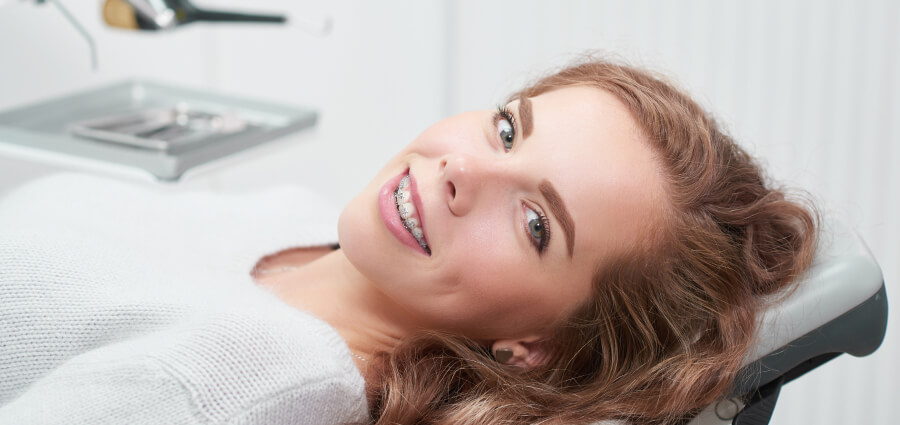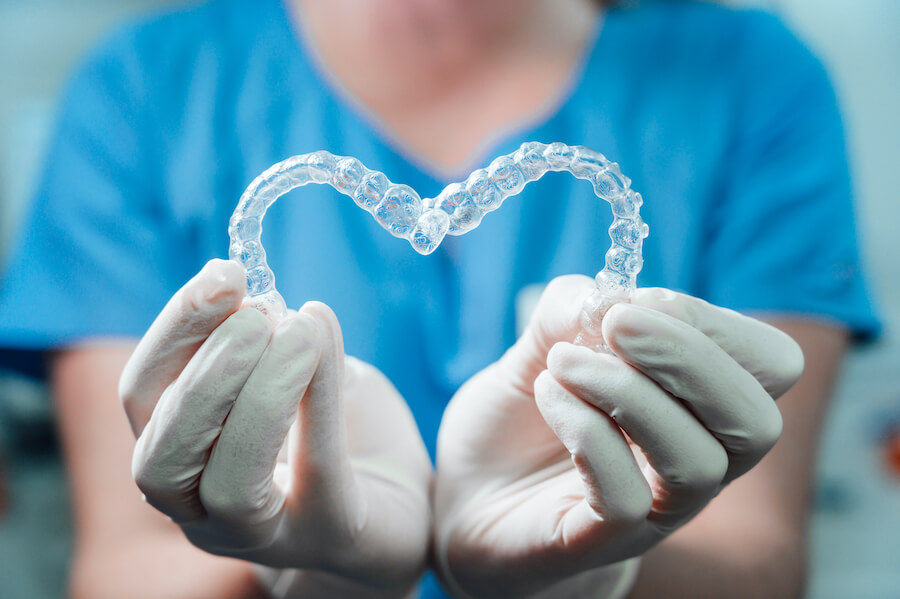Enhance Your Jaw’s Alignment with Personalized Solutions
Dentofacial orthodontics is a specialized field of dentistry that focuses on correcting irregularities in the teeth, jaws, and facial structure. This orthodontic treatment goes beyond straightening teeth to improve the overall appearance and functionality of the mouth, jaw, and face.
Discover how dentofacial treatments from Dr. Stephen Grussmark, our premier Miami, FL, orthodontist, can improve your smile’s health and image. We proudly welcome patients from Brickell, Key Biscayne, and Coral Gables, FL.


What Is Dentofacial Orthodontics?
Dentofacial orthopedics involves the alignment and positioning of the teeth and jaws to improve both the function and aesthetics of the face. It involves the diagnosis, prevention, and correction of improper bites (malocclusions) that can occur as a result of genetic factors, environmental factors, or a combination of both.
The Difference Between Traditional Orthodontics and Dentofacial Orthodontics
Traditional orthodontics typically focuses on tooth movement into proper alignment, while dentofacial orthodontics takes a more comprehensive approach, addressing the position of the teeth and the relationship between the jaws, facial bones, and overall oral health for adult teeth. Dentofacial orthodontics may include orthognathic jaw surgery, to correct severe jaw misalignments and result in a healthy smile.
Benefits of Dentofacial Orthodontics
Here are some benefits of dentofacial orthodontic treatment:
- Improved Dental Health: By correcting issues like crowded or misaligned teeth, dentofacial orthodontics can improve your overall dental health. When teeth are aligned, it’s easier to clean them thoroughly and prevent tooth decay, gum disease, and cavities.
- Enhanced Facial Aesthetics: Dentofacial orthodontics improves the symmetry and proportion of your facial features. This can boost your confidence and help you feel more comfortable and confident in social and professional situations.
- Reduced Risk of Future Complications: When teeth are aligned, there is less risk of future dental issues like tooth decay, gum disease, and temporomandibular joint (TMJ) disorders. This can save you time, money, and discomfort in the long run.
- Customized Treatment Plans: With dentofacial orthodontics, your orthodontist will create a customized treatment plan based on your unique needs and goals. You’ll receive personalized care and attention throughout treatment, ensuring the best possible results.
- Comfort and Convenience: With advances in technology, dentofacial orthodontics now offers a wide range of comfortable, discreet, and convenient treatment options. From clear aligners to lingual braces, there are several options available to suit your preferences and lifestyle.
- Improved Self-Confidence: When your teeth and facial features are aligned, it can enhance your self-confidence and self-esteem. By feeling more confident in your smile, you may become more comfortable in social and professional situations.

Types of Dentofacial Orthodontic Treatments
Traditional Braces
Traditional braces are metal brackets bonded to the teeth with wires threaded through the brackets to apply pressure to the teeth and move them into the desired position. Braces are typically worn for 18 to 24 months and require regular adjustments by an orthodontist.
Lingual Braces
Lingual braces are similar to traditional braces, but the brackets are attached to the back of the upper and lower teeth, instead of the front. This makes them virtually invisible from the front but can make them more challenging to clean and adjust.
Invisalign
Invisalign uses a series of custom-made aligners to gradually move the teeth into the desired position. The aligners are virtually invisible when worn. Invisalign treatment typically takes 12 to 18 months and requires regular check-ups with an orthodontist.
Orthognathic Surgery
Orthognathic surgery repositions the jaws to correct severe malocclusions (misaligned jaws). This type of treatment is typically reserved for patients with more severe or complex orthodontic issues.
Temporary Anchorage Devices (TADs)
TADs are small titanium screws placed into the jawbone to provide an anchor for orthodontic appliances. They work with conventional braces or aligners to help move teeth into the desired position more effectively.
Rapid Palatal Expansion (RPE)
RPE expands the upper jaw to correct crowding, crossbites, and breathing problems. This type of treatment is typically used in younger patients who are still growing and developing facial growth.
Preparing for Dentofacial Orthodontic Treatment
Whether you’re planning on getting traditional braces, clear aligners, or another type of treatment, it’s essential to prepare yourself for the process. Here are some steps you can take to prepare for dentofacial orthodontic treatment:
- Find the Right Orthodontist: The first step in preparing for dentofacial orthodontic treatment is finding the right orthodontist. Dr. Grussmark, a top-rated orthodontist in Miami, FL, has helped countless patients achieve healthy, aesthetically pleasing smiles.
- Get a Consultation: Once you’ve found an orthodontist, schedule a consultation to discuss your treatment options. Dr. Grussmark will examine your teeth, take x-rays and impressions, and discuss your treatment goals and expectations.
- Understand the Treatment Process: It’s essential to understand what the treatment process will involve before you begin. Ask your orthodontist to explain the treatment process in detail, including how long it will take, what types of appliances will be used, and what you can expect in terms of discomfort and maintenance.
- Plan for the Cost: Dentofacial orthodontic treatment can be expensive, so it’s necessary to plan for the cost. Check with your insurance provider to see if they cover orthodontic treatment, and, if not, explore payment plans and financing options with your South Florida orthodontist.
- Prepare for Maintenance: Maintaining your orthodontic appliances is crucial to the success of your treatment. Prepare for the extra maintenance required by investing in a good toothbrush, floss, and other dental hygiene products. You may also need to adjust your diet and avoid certain foods that could damage your appliances.

Frequently Asked Questions
Pain and discomfort are expected during the first few days after getting orthodontic appliances or adjustments. However, the discomfort usually fades over time, and patients can manage it using over-the-counter pain relievers.
Yes, adults can undergo dentofacial orthodontic treatment. The success of the treatment depends on the individual case, but age is not necessarily a barrier to treatment. Adults may even have more treatment options than children or teenagers.
The frequency of visits to the orthodontist depends on the treatment plan and the stage of treatment. Patients must visit the orthodontist every four to eight weeks for adjustments and progress checks. However, the orthodontist may require more frequent visits, especially during the initial stages of treatment.
Achieve Optimal Orthodontic Health with Dr. Grussmark
Whether you’re dealing with complex dental issues or simply want to improve your appearance and self-confidence, several orthodontic treatments are available to meet your unique needs. By working closely with Dr. Grussmark, you can enjoy the many benefits of dentofacial orthodontics and achieve the smile of your dreams.
Call our Miami, FL, office at (305) 441-1200 to schedule a consultation.

